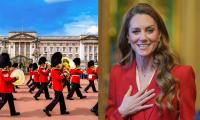The art of Enver Sajjad
Part - II
By Dr Naazir Mahmood
In 1986, at least three important publications highlighted Enver Sajjad’s creative potential and his critical insights into art, culture, history, and literature: the second edition of his collection of short stories ‘Chauraha’ (Crossroads), his articles and essays compiled in the book titled ‘Talash-e-Vajood’ (In search of being), and his discussion about drama with Bano Qudsia and Meerza Adeeb published in ‘Adab-e-Lateef Golden Jubilee Number’ edited by Siddiqua Begum.
‘Talash-e-Vajood’ begins with Enver Sajjad’s brief write-up titled ‘Mein aur Mera Fun’ (My art and I) in which he discusses his ideas of art and culture. “If human beings cannot associate with a discovery and are unable to fit it into their frames of mind, they tend to declare it meaningless and without any use. By doing so, they close the doors for investigation and research. Then a rebel comes and removes the dust off that discovery, tests it and – even if it doesn’t fit into the prevalent principles – develops new principles to give that discovery its proper place, respect, or status.”
To Enver Sajjad, art was a different realm, where everything is fluid with plenty of space in logic. But sometimes, science itself becomes a victim of dogmatism resulting from a limited understanding or sheer lethargy, Sajjad rightly explains. He goes on to describe his idea of a good story, quoting Faulkner as saying, “In the world, no story is a new story; only expression and styles are different.” Fiction, essay writing, dramaturgy, acting, painting, and even dance, for Sajjad all were means to understand his own and others’ internal and external situations.
Through all forms of arts, he wanted to comprehend the relationships between humans and their earthly and universal resources. This comprehension was essential to Sajjad for initiating a dialogue. “It is not my ambition to acquire a great status in all, or any one form of artistic expression; neither do I have any pretentions about it.” This statement showed that he was at peace with himself and was happy at dabbling in multiple arts, rather than excelling in any one of them – though he did excel in many.
Under the guise of ‘specialization,’ many observers – and even friends – discourage us from taking an interest in multiple subjects and topics; Enver Sajjad was not one of them. The scope of Sajjad’s interests was broad and he encouraged experiments in expression, indulgence in observation and study. “If writers have [a] wide spectrum, they will give a better perspective to everything. Storywriters who lack vision, are unable to use creative language in an effective manner.” What an apt comment, though some of his own early writings became a victim of this ineffectiveness; for example his novel ‘Rug-e-Sang’ which he had written in 1955 just at the age of 20.
In ‘Talash-e-Vajood’, Enver Sajjad wrote articles about Kishwar Naheed, Yusuf Kamran, Intizar Hussain, Massod Ashar, Mustansar Hussain Tarar, and Akhtar Mamoonka. But, the second and third sections of the book are much better and more insightful. For example, his 20-page essay titled ‘Musawwiri 62’ (Painting 62) written in 1962 gives an overview of art and paintings and contains some prescient statements about the fate of the arts in the country. In 1962, Pakistan was just 15 years old, but Enver Sajjad could foresee what was in store for us. First he laments those scholars who claimed that prior to Muhammad Bin Qasim, the Indian subcontinent was a wilderness.
Enver Sajjad wrote that we wasted 15 years in claiming that Pakistan should be content with its share of stationery, railway, army, and police. “Forget about Ajanta and Ellora, Taj Mahal and Chishti; be content with what you have here.” Sajjad disagrees. He warns that if we agree with this nonsense, soon there will be more confusion about the religious justification of fine arts, especially sculpture, paintings, dance, music, and even drama. “The puritans will soon throw these arts on the road from the oxygen tent they are already in. They will claim that these artistic expressions threaten Islam.” How apt he was.
“Even if we purge our history books of certain personalities or events, we cannot negate history for long; neither can we change it, nor can we adjust the course of history to suit our personal interests. Irrespective of our actions, history will have its own effects and implications. To critically analyze any contemporary piece of art and to understand its evolution and growth, I have to consider the pre-independence history, which is conjoined.” Such was the clarity of thought in Enver Sajjad. He goes on to discuss Shakir Ali, Ameer Ahmad Parvaiz, Ustad Allah Bukhsh, Manto, Chandaran, and Aslam Kamal.
The most detailed and insightful 50-page essay by Enver Sajjad is ‘Arastoo, Ayyar, aur Jabr ki Bootiqa’. In this essay, he comes out hard on those who repeat ad nauseam that “Pakistan is full of talent”. He says that talent may be God-given, but it needs to be groomed and nurtured with examples and guidance. We have destroyed our talent with our own arrogance and hubris, resulting in a situation where everyone thinks they can do everything. There is a disdain for intellect and intellectual discourse.
“Most of our new actors, directors, dramatists, playwrights, are all ignoramuses. They think they have so much talent that enables them to do everything without reading and training. We don’t believe in training academies and institutions for drama – especially for stage drama – screenplay, acting, or even direction. Since talent is God-given, why train?” Enver Sajjad was a strong believer in education, teaching and training for the arts, because they teach you discipline and clear your confusions. He was not happy at the quality of the arts produced in the country. “If we keep worrying about national security and religion, we are not going anywhere.”
And you bet he was right. If we have moved, the movement has been backwards. Enver Sajjad stressed that fitting into the international community was much more important than howling about an imagined threat to security and religion. Drama, film and stage should not isolate us from the issues of wider humanity, and confine us into our cocoons. “The intellectuals are the ones who want to improve our society irrespective of what the agencies or institutions want us to believe. Many of us become instruments of the same institutions that do not want to change and create obstacles in the path to our enlightenment.”
Enver Sajjad acknowledges the contribution of Augusto Boal, the Brazilian theatre practitioner and theorist whose marvelous book, ‘Theatre of the Oppressed’, had greatly influenced Sajjad. Later, this book was translated into Urdu by Aasim Kareem and published by Interactive Resource Centre in 2003. Enver Sajjad also expounded on these ideas in his discussion with Bano Qudsia and Meerza Adeeb. This discussion is worth reading in the Golden-Jubilee Number of ‘Adab-e-Lateef’ (1986).Then he wrote a 15-page essay, ‘Theatre ki Talash’ (In search of Theatre) published in ‘Pakistani Adab’ (1994) by the Pakistan Academy of Letters (PAL).
Readers must be wondering why there is no mention of his short stories. Well, his first unpublished collection, ‘Pehli Kahaniyan’ (First stories) included his stories from 1951 to 1957. ‘Chauraha’s first edition was published in 1965 that included stories from 1958 to 1964. The first edition also had stories ‘Mirgi’ (epilepsy), ‘Gai’ (Cow), Kikar, and Sada ba Sehra (Futile call). These four stories were included in his second collection titled ‘Istearay’ (1970). The second edition of ‘Chauraha’ appeared in 1986. Perhaps the first critical essay on his stories – ‘Enver Sajjad ki Afsana Nigari’ by Nazeer Ahmad – appeared in Funoon (July 1968).
You may also read his short story ‘Raat ka Safar Nama’ (Travelogue of Night) in the PAL publication, ‘Muzahamati Adab Urdu’ compiled by Rasheed Amjad in 1995. In the quarterly ‘Adabiyat’ of PAL Enver Sajjad wrote a sketch, ‘Pir Sahab’, about Rafi Pir. His story ‘Cinderella’ was also carried by the Pakistani Afsana Number of ‘Sayyara Digest’ issued in August 2000. The quarterly ‘Ijraa’ in 2011 carried a brief write-up by Enver Sajjad introducing ‘Symphony’, a long poem by Ayub Khawar. To conclude, we may say that Enver Sajjad had a lot to offer to this society, but he was one of the unappreciated and unsung heroes of Pakistani art and culture.
Concluded
The writer holds a PhD from theUniversity of Birmingham, UK and works in Islamabad.
Email: mnazir1964@yahoo.co.uk
-
 Philippines Blocks Elon Musk’s Grok AI
Philippines Blocks Elon Musk’s Grok AI -
 Jennifer Lawrence Blames Internet For Losing Sharon Tate Role
Jennifer Lawrence Blames Internet For Losing Sharon Tate Role -
 DeepMind, Google CEOs Sync Daily To Accelerate AI Race Against OpenAI
DeepMind, Google CEOs Sync Daily To Accelerate AI Race Against OpenAI -
 Japan Launches Probe Into 'Grok AI' Following Global Scrutiny Over 'inappropriate' Content
Japan Launches Probe Into 'Grok AI' Following Global Scrutiny Over 'inappropriate' Content -
 Prince Harry All Set To Return To Britain Next Week?
Prince Harry All Set To Return To Britain Next Week? -
 Is Princess Charlotte Becoming Most Confident Young Royal?
Is Princess Charlotte Becoming Most Confident Young Royal? -
 ‘Stranger Things’ Star David Harbour Speaks Up About ‘psychotherapy’
‘Stranger Things’ Star David Harbour Speaks Up About ‘psychotherapy’ -
 Jennifer Love Hewitt Talks About Scary 9-1-1 Episode
Jennifer Love Hewitt Talks About Scary 9-1-1 Episode -
 Kate Middleton Ditches Palace Life For Where She 'truly Relaxes'
Kate Middleton Ditches Palace Life For Where She 'truly Relaxes' -
 Pixel Watch May Soon Warn You If You Leave It Behind
Pixel Watch May Soon Warn You If You Leave It Behind -
 Serious Liver Scarring Shows Potential To Be Reversed With Latest Drug
Serious Liver Scarring Shows Potential To Be Reversed With Latest Drug -
 Elon Musk Backs Donald Trump To Invoke Insurrection Act Amid Minnesota Protests
Elon Musk Backs Donald Trump To Invoke Insurrection Act Amid Minnesota Protests -
 Scientists Unravel Mystery Of James Webb’s ‘little Red Dots’ In Deep Space
Scientists Unravel Mystery Of James Webb’s ‘little Red Dots’ In Deep Space -
 Nano Banana Explained: How Google’s AI Got Its Name
Nano Banana Explained: How Google’s AI Got Its Name -
 Fire Causes Power Outage On Tokyo Train Lines, Thousands Stranded As ‘operations Halted’
Fire Causes Power Outage On Tokyo Train Lines, Thousands Stranded As ‘operations Halted’ -
 YouTube, BBC To Ink Landmark Deal To Launch Exclusive Bespoke Shows
YouTube, BBC To Ink Landmark Deal To Launch Exclusive Bespoke Shows



